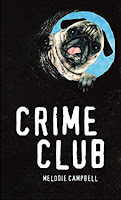I have a particular hobby horse when it comes to mystery writing that I keep well fed and groomed, and in a comfortable barn.
Good writing is good writing irrespective of the genre. I’ve got the degrees and read thousands of books of all kinds, and some mysteries are examples of transcendently exquisite writing.
Classical, didactic definitions of exceptional literature are meaningless to me. What constitutes good writing is in the mind of the reader, though I think we can fairly say that if it engages you, holds your attention to the end, and leaves you feeling a bit excited, the writer’s mission was a success.
To those who think genre writing, in particular the mystery/thriller species, is somehow second rate, I like to say, “You try it.” I also play in a rock band. Trained classical musicians might think our musicality is primitive, but if you don’t have a feel for the nuances and texture of the form, it will stick out like a sore thumb. I love ballet, but I’ve known some ballet dancers who have no idea how to get it done on the dance floor, especially with a disco ball overhead and giant amplifiers pounding in their ears.
Writers of both literary fiction and mysteries select from the same toolbox. They both need vividly rendered characters, clever and mellifluous prose and a sturdy, satisfying plot. In fact, mystery writers cannot succeed without that last ingredient, whereas the literary breed can sort of drift off toward the end of a book with a vague, exhausted glance at their premise and often get away with it.
The debate over high vs. low art is eternal and unresolvable. Partly because what’s high or low has been historically fungible. To me, the Olympian height of visual art was achieved by the Impressionists, though in their own time, the French Academy wouldn’t invite them to a cocktail party, much less to a spot on the wall of the Louvre. There isn’t a music critic alive today who wouldn’t regard Duke Ellington or Miles Davis as a consummate genius, but go look at their contemporaneous reviews.
Everyone is entitled to like what they like and disregard the rest. I have a list of songs and movies I love that my best friends think are complete crap. And vice versa. That’s not only okay, it’s what makes the arts so richly wonderful. There’s something for everyone. That doesn’t mean there can be no objective measures of quality. There is often a general consensus (few would regard Bo Derrick’s Tarzan movie on par with the best of Truffaut), but you have a right to stand bravely outside the mob and declare your devotion to Bo’s “They’re painting me!” pathos.
What I argue with is condemnation, or ridicule, of entire swaths of creativity, based entirely on whether or not it fits within a prescribed set of criteria – a frozen, sclerotic definition. Most, if not all, the mystery writers I know would say they could care a toss about this. But of course, deep down, they do.
I just know that Scott Turow set out as a young writer to create a mystery/thriller informed by literary techniques and sensibility, and came up with Presumed Innocent, an artistic tour de force. As did Dennis Lehane with Mystic River and Gillian Flynn with Gone Girl.
I’m convinced that in a future time, these works will be sitting alongside Faulkner, Twain and Flaubert, and no one will think a toss about it.





